Who says print is dead? Here are six great books that will make a wonderful gifts for you (print this post and hand it to your loved ones as a “hint” – or buy them for yourself) – or give ’em to that beloved animation freak in your life.
Funnybooks: The Improbable Glories of the Best American Comic Books by Michael Barrier
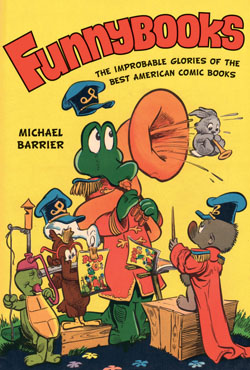 Clear some bookshelf space next to Michael Barrier’s Hollywood Cartoons and The Animated Man. Mike’s latest book completes his “Funnyworld Trilogy” (my term), a triumvirate of tomes that fulfill the promise many us believed Barrier would deliver when he first announced his intentions in the pages of Funnyworld over 40 years ago.
Clear some bookshelf space next to Michael Barrier’s Hollywood Cartoons and The Animated Man. Mike’s latest book completes his “Funnyworld Trilogy” (my term), a triumvirate of tomes that fulfill the promise many us believed Barrier would deliver when he first announced his intentions in the pages of Funnyworld over 40 years ago.
Mike Barrier has always been one of my heroes; his pioneering research and writing about comics and animation is the standard many of us strive to achieve in our own work. Barrier has a new book and it is of a piece with his previous ones. If you are a student of animation history and/or of comic book history, Funnybooks a major work of scholarship. A must-have.
Barrier deftly weaves together the larger history of animation, mid-century childrens pop-culture, and the story of comic books to tell the specific untold story of Western Publishing, (aka Dell/Gold Key/Whitman Comics) and an appreciation of its greatest practioners: Carl Barks (Disney Duck comics), Walt Kelly (Pogo) and John Stanley (Little Lulu).
I cannot express how much I love this book – and how it took me by complete surprise. I have always been a comics geek – and as such, always had a strange fascination with Dell/Gold Key. Their comics were not like the Marvel, DC, Archie, Harvey stuff I also grew up with. There was a different editorial “point-of-view” going on there – and no one has ever accurately explained it all. Until now.
The rumor was that Barrier was writing a book about Barks, Kelly and Stanley – and that would have been good enough. Instead, Barrier’s Funnybooks emerges from decades of research to elegantly explain the rise (and fall) of three visual (and visionary) storytellers working in a medium no one really took seriously at the time – beyond the artists themselves and their children readership.
What I love is that Barrier ties together his (and my) love for these comics and their creators with the larger universe of animated cartoons and the comic book industry. There is material here that no ordinary comics scholar would have access to, material here that no animation historian would associate to comics. It’s Barrier’s strong interest in both media that informs the text and provides insights. I can’t imagine the story here being told by anyone else – or better written.
At the core of Barrier’s Western Publishing history is his superb analysis of Barks, Kelly and Stanley. He explains the essence of what made each great, by citing particular stories, individual sight gags, specific dialogue and so on, in ways that made me want to immediately dive back (ala Scrooge) into my comics bin and start re-reading. You’ll also learn who these people were, their backstory and how their lives and situations influenced their work. How all the players came together at a certain time and place to create the stories and characters that have now become classic.
The book also contains a sufficient amount of illustrations (in black & white), not a lot, just enough to illustrate a point and whet your whistle. But that’s okay, I’m not complaining in the least! It was a personal pleasure to read Mike Barrier’s latest book – I cannot recommend it highly enough. Go out and buy it. Now.
The Dodals: Pioneers of Czech Animated Film by Eva Strusková
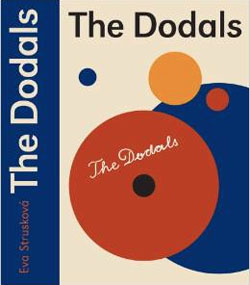 Here’s an important new book you didn’t know you needed, and didn’t know existed. Published in English by the National Film Archive and the Academy of Performing Arts in Prague (distributed by Artbooks/D.A.P.), this is a history of Czech animation centered around the pioneering efforts of Karel Dodal and his wives, Hermina (in the 1920s) and Irena (from 1935 on). It’s a story that begins in Prague in 1927, winds through their making entertainment, educational, industrial, experimental and commercial animated films (as well as Nazi propaganda during the war), and their later career making films in post-war New York and later in South America. They left behind a trail of animated films, both personal and commercial, most of them previously unknown to me.
Here’s an important new book you didn’t know you needed, and didn’t know existed. Published in English by the National Film Archive and the Academy of Performing Arts in Prague (distributed by Artbooks/D.A.P.), this is a history of Czech animation centered around the pioneering efforts of Karel Dodal and his wives, Hermina (in the 1920s) and Irena (from 1935 on). It’s a story that begins in Prague in 1927, winds through their making entertainment, educational, industrial, experimental and commercial animated films (as well as Nazi propaganda during the war), and their later career making films in post-war New York and later in South America. They left behind a trail of animated films, both personal and commercial, most of them previously unknown to me.
This book tells their story in-depth with much detailed research, a complete filmography and numerous film frame images – showcasing an alternate world of foreign classic cartooning and animated graphics that alone are worth buying the book for. The Dodals started out making (unauthorized) Czech Felix The Cat cartoons, and rip offs of Fleischer Inkwell cartoons (featuring a Koko-inspired rotoscoped chap named “Bimbo”) in the 1920s. The book also incorporates the rest of Czech animation history, with puppet films, etc. and includes a DVD with 28 of the Dodals films – commercials, cartoons, experimental stuff – all sorts of things I’d never seen before.
Like I said, I’d never heard of the Dodals or seen their animation, but this book is the complete package of everything you need to know about them. Considering their fascinating story and the quality of their films – if you love the odd and obscure – this one is worth having in your collection. Highly Recommended!
Disney During World War II: How the Walt Disney Studio Contributed to Victory in the War by John Baxter
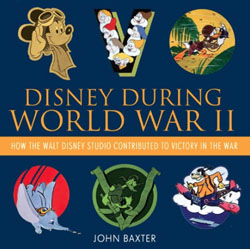 This is a very good – but very basic – book about the Disney cartoons produced during World War II. I believe there is another, more in-depth such book being written – but for now, this officially sanctioned “Disney Editions” volume will do. It goes through and covers all the aspects – for me there were no surprises – but its nice to have it all in one place.
This is a very good – but very basic – book about the Disney cartoons produced during World War II. I believe there is another, more in-depth such book being written – but for now, this officially sanctioned “Disney Editions” volume will do. It goes through and covers all the aspects – for me there were no surprises – but its nice to have it all in one place.
The two virtues of this project are (#1) the wealth of art, photos, storyboards, posters, insignia, etc. from the Disney archive and beautifully reprinted and presented here – and (#2) a chapter on Gremlins that pretty much compiles everything we know about the project – topped by a complete storyboard treatment for what looks like a 30-minute Gremlins short that I never knew about. This alone makes the book worth getting.
Writer John Baxter does a good job organizing the material and presenting the information; breaking it into five chapters which cover the bases: 1. The Training Films, 2. The Propaganda (which includes Victory Through Air Power, Bond selling shorts, Reason and Emotion, Chicken Little and Der Fuehrer’s Face), 3. The Entertainment Shorts (Commando Duck, et al), 4. The Military Insignia and 5. Gremlins.
Not written with the depth of a J.B. Kaufman, John Canemaker or Mike Barrier – but worthy of purchase, your time and a place on the shelf.
Walt Disney’s Mickey Mouse Vol. 6: “Lost In Lands Long Ago” (Vol. 6) edited by David Gerstein and Gary Groth
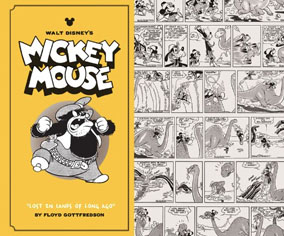 What would one of my book review round-ups be without a new Floyd Gottfredson Mickey Mouse comic strip volume edited by David Gerstein and Gary Groth? Luckily we don’t have to find out, because a new one is here – and, as usual, I recommend it very highly. Every serious fan and historian of Disney (or Mickey Mouse) should own all the volumes in this library, published by Fantagraphics Books.
What would one of my book review round-ups be without a new Floyd Gottfredson Mickey Mouse comic strip volume edited by David Gerstein and Gary Groth? Luckily we don’t have to find out, because a new one is here – and, as usual, I recommend it very highly. Every serious fan and historian of Disney (or Mickey Mouse) should own all the volumes in this library, published by Fantagraphics Books.
“Lost In Lands Long Ago” Vol. 6 once again provides a feast of Mouse material to gnaw on. First, the strips themselves. This is a transition period (April 1940-May 1942) for Gottfredson’s art – and I like it! Gottfredson’s later “cartoony” style emerges, moving from the previous on-model pie-eyed Mickey to a looser, more rubbery style inspired by Freddy Moore’s makeover in the animated cartoons themselves.
The continuities here include a western adventure, a “Lonesome Ghosts” who-dun-it, a “Lost World ” prehistoric cliffhanger, A Mickey-Minnie-Monty Rodent love triangle (my favorite in the book – every panel dripping with appeal), and stories where Mickey becomes an advertising mad-man, a north-woods logger and a mystery wherein Mickey and Goofy track down a hypnotic jewel thief.
Though the series will continue to reprint the strips into the war years (and beyond), apparently this is the final volume to contain the ample amount of bonus material we’ve become accustomed to. This time the “Gottfredson Archives” – essays, rare art and special features assembled by Gerstein – include a introductory overview by comic strip scholar Thomas Andrae; a two page “appreciation” by comics artist Stephen DeStefano, an essay about Carl Barks with a complete reprinting of his one and only Mickey Mouse comic book story – and much much more.
Highly recommended!
Pogo Vol. 3: Evidence To The Contrary (Vol. 3) by Walt Kelly
 I’ve been a long time admirer – but no expert – of Walt Kelly’s Pogo. That’s why I’m grateful to Carolyn Kelly (Walt’s daughter), Eric Reynolds and Mark Evanier for meticulously collecting these classic comic strips into this ongoing series from Fantagraphics Books. This volume covers the strips from 1953 and 1954 with Kelly in classic form – and as far as the artwork goes, there is only one word: “Wow!”
I’ve been a long time admirer – but no expert – of Walt Kelly’s Pogo. That’s why I’m grateful to Carolyn Kelly (Walt’s daughter), Eric Reynolds and Mark Evanier for meticulously collecting these classic comic strips into this ongoing series from Fantagraphics Books. This volume covers the strips from 1953 and 1954 with Kelly in classic form – and as far as the artwork goes, there is only one word: “Wow!”
Equally (or more) important, the writing couldn’t be wittier, the characters more defined and the gags more pointed. This was the height of the McCarthy Era – and Kelly’s satire of Senator Joe McCarthy, “Simple J. Malarkey”, was notorious then – and still valid today. That’s the very definition of a classic – Pogo, for all its topical commentary, is timeless in its humor and charm.
The book contains two years of daily strips reprinted in crisp black & white, and 104 Sunday pages in full color. Mike Peters (Mother Goose and Grimm) pays tribute with a heartfelt Foreword; R.C.Harvey annotates with detailed insight and historical data; Mark Evanier provides a bio of Kelly; Maggie Thompson and Carolyn Kelly compile noteworthy quotes from the strip.
As Churchy La Femme says on the April 4th 1954 Sunday page, “Anything handy is perty favorite.” This book makes some the very best Pogo strips “perty” handy. And thus its my favorite of the volumes released so far.
 I’m not one to buy contemporary animator sketchbooks, but this one is a knock-out, page after page. And why not? Its a showcase of work by six of Disney Animation’s top visual development artists – who just happen to be women. I picked it up at the recent CTN Expo where the ladies – Lorelay Bove, Mingjue Helen Chen, Claire Keane, Lisa Keane, Brittany Lee, Victoria Ying – were selling it at their own booth. This is a self-published book of non-Disney art by Disney’s top artists – with a foreword by John Lasseter and an introduction by Glen Keane.
I’m not one to buy contemporary animator sketchbooks, but this one is a knock-out, page after page. And why not? Its a showcase of work by six of Disney Animation’s top visual development artists – who just happen to be women. I picked it up at the recent CTN Expo where the ladies – Lorelay Bove, Mingjue Helen Chen, Claire Keane, Lisa Keane, Brittany Lee, Victoria Ying – were selling it at their own booth. This is a self-published book of non-Disney art by Disney’s top artists – with a foreword by John Lasseter and an introduction by Glen Keane.
The art is superb and each artist, naturally, has her own style. Lorelay Bove is the closest to a modern day Mary Blair, but her work is more informed by 50s moderne and Disneyland retro. Beautiful stuff. Mingjue Helen Chen can seemingly do it all. Gorgeous color key paintings, dynamic characters in ink and screen tone… exciting graphics galore. Claire Keane does portraits and sketches that remind me of classic abstract art. Imaginative is the word that comes to mind. Lisa Keane’s paintings of dogs and cats are both rough and detailed at the same time. She knows how to capture personality with the least brush strokes – or so it seems. Check them out. Brittany Lee does paper cut sculptures that are breath taking and fun. Her work simply puts a smile on my face. And finally Victoria Ying – what can’t she do? Her paintings combine cubism, angles, color and design into pleasing characters and memorable images.
Each artist discusses her inspirations, their art and their approaches. The book is very inspirational – which I guess is the point of a sketch book. If you want to feel hope for the future of feature animation – this book will give you that hope.
The Arthur Rankin Jr. Scrapbook by Rick Goldschmidt and Wes Garlatz
 Rankin/Bass historian Rick Goldschmidt has been doing the Lord’s work in keeping the various Rankin-Bass movies, series and specials alive with his books and blogs throughout the years. His latest book is a little pricey ($39.99 for 101 pages) but if you are R-B fan, a stop-mo enthusiast or a nut for animation minutia (count me in for all three) you gotta have this.
Rankin/Bass historian Rick Goldschmidt has been doing the Lord’s work in keeping the various Rankin-Bass movies, series and specials alive with his books and blogs throughout the years. His latest book is a little pricey ($39.99 for 101 pages) but if you are R-B fan, a stop-mo enthusiast or a nut for animation minutia (count me in for all three) you gotta have this.
Goldschmidt’s new publication is literally a reproduction of a 1959-1961 scrapbook Arthur Rankin kept while working with Dentsu Studios in Japan – working mainly on The New Adventures of Pinocchio, Rankin-Bass’ first “Animagic” stop-motion series. It’s loaded with great behind the scenes production stills, Japanese newspaper clippings and other rare finds (R-B pitch art for a stop-mo Amos and Andy (!!); never seen Paul Coker Jr. art of Shirley Temple as “Dorothy” in Journey Back To Oz (!!!), etc.).
It’s an addendum to Goldschmidt’s masterwork, The Enchanted World of Rankin/Bass, and I’m glad he’s sharing his latest finds with all of us. Thanks, Rick. Keep ’em coming!



 Jerry Beck is a writer, animation producer, college professor and author of more than 15 books on animation history. He is a former studio exec with Nickelodeon Movies and Disney, and has written for The Hollywood Reporter and Variety. He has curated cartoons for DVD and blu-ray compilations and has lent his expertise to dozens of bonus documentaries and audio commentaries on such. Beck is currently on the faculty of Cal Arts in Valencia, UCLA in Westwood and Woodbury University in Burbank – teaching animation history. More about Jerry Beck [
Jerry Beck is a writer, animation producer, college professor and author of more than 15 books on animation history. He is a former studio exec with Nickelodeon Movies and Disney, and has written for The Hollywood Reporter and Variety. He has curated cartoons for DVD and blu-ray compilations and has lent his expertise to dozens of bonus documentaries and audio commentaries on such. Beck is currently on the faculty of Cal Arts in Valencia, UCLA in Westwood and Woodbury University in Burbank – teaching animation history. More about Jerry Beck [



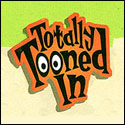



Re: lack of bonus material in future Floyd Gottfredson Library Mickey volumes—we know it, we can’t help it! From the war years onward, there were simply fewer tie-ins between the Gottfreson Mickey comic strip and other aspects of Disney (animation, merchandising, etc.).
But our extra features won’t entirely vanish. Just you wait…
Whaiting with bhaited bhreath, mhan….
THANKS Jerry! I try 🙂 I wanted everyone to see the scrapbook, so we put it out as is and added some things from the end of Arthur’s life. He is missed, especially this time of year!